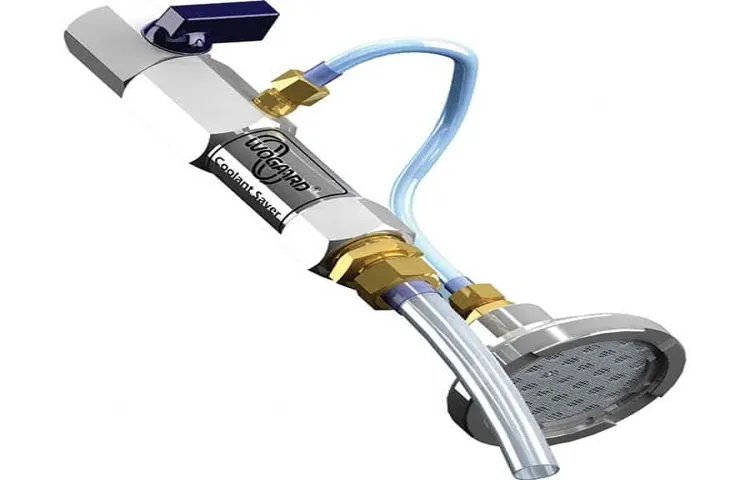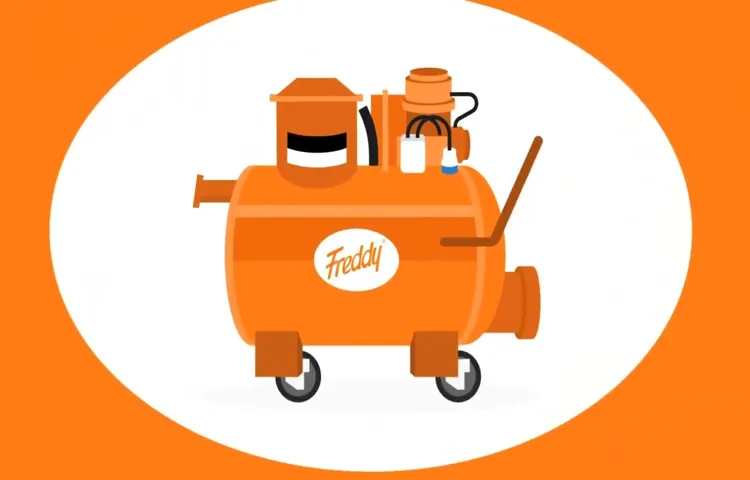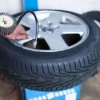If you’re looking for ways to maintain the health of your car and ensure that it runs smoothly, then removing coolant from your vehicle is an essential task you need to know. Coolant is the fluid that circulates through your car’s engine, absorbing heat and keeping it cool. However, over time, coolant can become contaminated or even start to break down, which can lead to damage to your engine.
That said, you don’t have to be a professional mechanic to remove coolant from your car. Whether you’re a seasoned DIY enthusiast or just trying to save some money on auto repairs, this guide will provide you with all the information you need to remove coolant from your car effectively. So, let’s dive in and explore the steps involved!
Table of Contents
Precautions to Take Before Removing Coolant
If you’re planning to remove coolant from your engine, there are a few precautions you should take to ensure your safety and avoid any unnecessary damage to your car. Firstly, make sure the engine is turned off and has cooled down completely. Remove the radiator cap and open the drain valve to allow the coolant to flow out into a container.
Remember to wear gloves as coolant can be harmful to the skin. Once the coolant is drained, dispose of it in an eco-friendly manner. Additionally, always check the level of coolant in your car’s manual before removing any.
If you’ve recently used the car, it’s better to wait for a while for the engine to cool down before removing the coolant. In case of any leaks or spills, always clean up thoroughly to prevent any accidents. By taking these simple precautions, you can successfully and safely remove coolant from your car.
Gathering Necessary Materials
Before removing coolant from your vehicle, taking the necessary precautions is imperative for ensuring your safety and the environment’s well-being. Firstly, gathering all the required materials beforehand can prevent any mishaps. These materials include safety goggles and gloves, a drain pan or bucket, a funneled container, a coolant tester, and clean rags or paper towels for any potential spills.
Additionally, it’s vital to ensure that your vehicle’s engine is cold before you begin removing the coolant to avoid being burnt by hot liquids. Another precautionary measure to take is to make sure the draining coolant will not pollute the environment. Nowadays, many hardware shops offer antifreeze-recycling programs.
It’s worth checking whether these options are available in your area to dispose of used coolant safely. Taking these necessary precautions before removing coolant can prevent potential danger and environmental damage.

Protecting Yourself and the Environment
Removing coolant can be a daunting task, but it’s important to take precautions to protect yourself and the environment. Before starting, make sure to wear protective gear such as gloves, goggles, and a respiratory mask to prevent any harmful fumes or splashes from entering your body. It’s also important to use a drain pan to collect the coolant and prevent it from leaking onto the ground or in water sources.
Once the coolant is collected, dispose of it properly by taking it to a recycling center or household hazardous waste facility. Remember, coolant contains toxic chemicals that can harm both the environment and wildlife, and improper disposal can result in fines or legal consequences. By taking these simple precautions, you can safely remove coolant without causing harm to yourself or the environment.
Steps to Remove Coolant from Your Car
Removing coolant from your car is an essential part of routine maintenance. Here are the steps to follow to remove coolant safely and efficiently. First and foremost, allow your engine to cool completely before attempting to remove the coolant.
Next, open the radiator cap and find the drain plug at the bottom of the radiator. Place a container underneath the drain plug to catch the old coolant, then open the plug and let the old coolant drain out entirely. After all the coolant has drained out, close the drain plug and refill the radiator with clean water.
Start up your car and let it run for a few minutes, then turn it off and let it cool. Finally, drain out the water and replace it with new, fresh coolant. It is important to properly dispose of the old coolant as it is toxic to humans and animals.
Following these steps will ensure that your car’s cooling system operates efficiently and effectively, reducing the risk of engine failure and prolonging the life of your car.
Locating the Radiator Cap and Drain Plug
When it comes to performing routine maintenance on your car, flushing the coolant system is an important task that should not be overlooked. In order to efficiently remove the old coolant, you’ll need to locate the radiator cap and drain plug. These can typically be found near the bottom of the radiator and are identifiable by their unique appearance.
Once you’ve located these components, it’s important to make sure the car’s engine is cool before proceeding. You don’t want to risk getting burned by hot coolant! After allowing the car to cool, place a container under the drain plug to catch the old coolant and remove the radiator cap. By opening the drain plug and allowing the coolant to flow out, you’ll be able to remove all of the old coolant and prepare the system for a fresh batch.
This process should be repeated until all of the old coolant has been removed, and then the system can be refilled with new coolant. Make sure to properly dispose of the old coolant and follow your car’s maintenance schedule for future coolant flushes. By taking care of your car’s coolant system, you can help ensure it runs smoothly for years to come.
Draining the Coolant
Draining the coolant from your car is an easy task that you can perform yourself without too much trouble. However, before you begin, make sure your car is completely cool to prevent any burns or accidents. The first step is to locate the radiator and place a container or bucket underneath to catch the coolant as it drains out.
Then, you will need to locate the radiator drain plug, which is typically located on the bottom of the radiator. Once you have found the drain plug, use a pair of pliers or a wrench to loosen it and allow the coolant to flow out. Be careful not to lose the drain plug, as you will need it to seal the radiator once you have drained the coolant.
Finally, when all the coolant has drained out, tighten the drain plug and refill the radiator with fresh coolant. By following these simple steps, you will be able to successfully drain and replace the coolant in your car, which will help keep your engine running smoothly and efficiently.
Flushing the Cooling System
If you’ve noticed that your car’s engine is running hot or overheating, it could be a sign that your cooling system needs some attention. One important aspect of maintaining your car’s cooling system is to periodically flush out the old coolant and replace it with fresh fluid. But how do you go about removing the old coolant? There are a few key steps to follow.
First, find the coolant reservoir under the hood of your car. This should be clearly labeled. Next, place a container or bucket beneath the radiator drain valve.
Open the valve and allow the old coolant to drain out. Once it has finished draining, close the valve and refill the radiator with fresh coolant. Don’t forget to bleed the air out of the system before you start your engine! By following these steps, you can ensure that your cooling system is operating efficiently and effectively, helping to keep your engine at a safe, optimal temperature.
So don’t neglect your cooling system – take the time to flush and replace your coolant regularly, and your car will thank you!
Disposing of Coolant Properly
When it comes to changing your coolant, proper disposal is crucial to keeping the environment safe. After draining the coolant from your radiator, it’s important to know how to remove coolant in a way that’s not harmful to the ecosystem. The first step is to avoid dumping it down a drain or tossing it in the trash.
Instead, take it to a local recycling center or auto parts store that accepts used coolant for recycling. The reason for this is that coolant is comprised of a mix of water, antifreeze, and various chemicals that can be harmful if not disposed of properly. These substances can contaminate water supplies and soil, and they’re dangerous to animals.
So, do your part in protecting our planet by taking care to dispose of coolant safely and responsibly.
Pouring Coolant into a Sealable Container
Coolant disposal Pouring coolant into a sealable container is one of the safest ways to dispose of this hazardous waste. Coolant is a toxic substance that can cause harm to both the environment and our health if it’s not disposed of properly. However, it’s essential to use a sealable container to ensure that the coolant doesn’t leak or spill.
Once you’ve located a suitable container, pour the coolant slowly, ensuring that you don’t fill it to the brim. Doing this will give the coolant some room to expand if it freezes. Label the container appropriately with the word “coolant,” and make sure it’s stored in a safe place away from children and pets.
Don’t dump the coolant in your garbage, sink, or outdoor space since it can contaminate groundwater, harm marine life, and impact the ecosystem negatively. Instead, search for your nearest coolant recycling facility that can dispose of it safely. By pouring coolant into a sealable container, you’re taking a significant step in helping to protect the environment, preserving natural resources, and supporting a more sustainable future.
Taking the Coolant to a Recycling Center
Properly disposing of coolant is vital to keep our environment clean and safe. An excellent way to dispose of used coolant is by taking it to a recycling center. These centers have the necessary equipment to recycle and dispose of coolant safely and responsibly.
By recycling your coolant, you help to reduce pollution and conserve natural resources. Proper disposal of coolant also prevents possible contamination of our waterways. So, don’t pour your used coolant down the drain or leave it sitting in your garage.
Take it to a recycling center where it can be managed correctly. It’s a small action that can make a big difference in protecting our environment.
Conclusion
Removing coolant may seem like a daunting task, but with the right tools and techniques, it can be a breeze. Whether you’re dealing with a stubborn puddle on your garage floor or simply need to flush your radiator, a little know-how goes a long way. Just remember, when it comes to coolant, safety always comes first.
So, grab your gloves and goggles, follow our step-by-step guide, and soon you’ll be waving goodbye to that colorful liquid like an old friend. Coolant, we hardly knew ye!”
FAQs
1. What is coolant and why is it important for my car? A: Coolant, also known as antifreeze, is a mixture of water and ethylene or propylene glycol. It helps regulate the temperature in your car’s engine and prevents it from freezing in cold temperatures. 2. How often should I replace my coolant? A: The recommended interval for coolant replacement varies by car manufacturer, but it is typically between 30,000 and 50,000 miles or every 2-3 years. 3. How do I know if my coolant needs to be topped off? A: Check the level of the coolant in the overflow tank when the engine is cool. If it is below the minimum level, add a 50/50 mixture of coolant and water until it reaches the maximum level. 4. What should I do if my car overheats due to low coolant? A: Pull over to a safe place and turn off the engine. Let it cool down for at least 30 minutes before attempting to add coolant. Check for any leaks and refer to your owner’s manual for instructions on how to add coolant. 5. Can I use any type of coolant in my car? A: No, it is important to use the type of coolant recommended by your car manufacturer. Using the wrong type can cause damage to your engine and cooling system. 6. How do I properly dispose of used coolant? A: Used coolant is toxic and should be disposed of at a hazardous waste facility. Do not pour it down the drain or discard it with regular trash. 7. How can I prevent my coolant from freezing in cold temperatures? A: Make sure your coolant mixture contains at least 50% antifreeze and keep your car in a heated garage or add a block heater to prevent freezing.


